Communication Committee: Past, present and future perspectives on science communication in OHBM8/17/2021 The OHBM communication committee (OHBM ComCom) works to improve communication both within and beyond the OHBM community, creating content for the OHBM blog, podcast and social media and reporting about current topics in our community and field.
Founded in 2015 from a Council Strategic Planning retreat chaired by Karen Berman, ComCom was originally envisioned as a way to improve communication between Council and membership, serving as a contact point for members throughout the year. Under its first chair Randy Gollub, ComCom established four initial teams: social media, blog, lay media, and website. From this strong foundation, ComCom has grown to include additional platforms such as the new OHBM podcast Neurosalience. In this interview, the 2019 chair Nikola Stikov, 2020 chair Nils Muhlert, current chair Ilona Lipp, and chair-elect Elizabeth DuPre sit down together to discuss the history of ComCom, ongoing initiatives, and the importance of open communication both within OHBM as well as to the broader scientific community. If you are interested in joining ComCom or contributing to the OHBM blog or podcast, please get in touch with current chair Ilona Lipp by email at lippi [at] cbs.mpg.de or on Twitter at @ilona_lipp.
0 Comments
The Sustainability and Environmental Action Special Interest Group (SEA-SIG) was formed by the Organization for Human Brain Mapping (OHBM) in 2020 in recognition of the need to reduce the impact of the organization and its members on the environment. The SIG has three working groups, with each providing a unique focus for shared action:
By: Chao-Gan Yan The 5th Annual Event of Chinese Young Scholars for Human Brain Mapping was held on June 23, 2021 under the topic of “Neuroimaging data sharing and open brain science in China”. As in previous editions, the goal of this event is to bring together Chinese researchers from the OHBM community to communicate, discuss, and collaborate on cutting edge neuroscience research topics and methods. We invited Professors Ying Han, Jiang Qiu, Sha Tao, Chao-Gan Yan, Chun-Shui Yu, Yu-Feng Zang, Zhan-Jun Zhang, and Xi-Nian Zuo to give talks on open neuroimaging resources in China.
By Peter Bandettini; production by Kevin Sitek & Rachael Stickland
Dr. Hariri recently published an important paper on the test-retest reliability of common task-fMRI measures. This received attention in the field and from the popular media and generated useful discussions. In this podcast Peter and Ahmad discuss the implications of this paper and how to address the challenges it presents and continue to move the field forward. This is an informative and positive discussion about how to collectively address these issues as a field. By Tzipi Horowitz-Kraus & Nils Muhlert
The neuroimaging community has been very active in creating large-scale studies across a range of age groups, which have helped to tackle reproducibility issues. Most studies originate in the United States and Europe, although many other geographic regions are pursuing similar initiatives (for instance, you can read about initiatives in China in our blogpost). The Middle East, a 7.2m km2 region of diverse religions and cultures, has been very productive in the neuroimaging community in the past years. To get an update on how neuroimaging is changing in this region we asked brain mappers from the middle east to let us know of their projects and surveyed prominent researchers in different countries. We provide a brief overview of some of these activities in the Emirates, Israel, Saudi Arabia, and Turkey with the hope of future scientific collaboration between these countries.
Interview by Peter Bandettini, production by Nils Muhlert and Niall Duncan
This podcast idea was precipitated by Dimitri Kullman’s 2020 editorial in Brain, causing a stir in the community. It leveled criticism about the clinical validity of fMRI. Some of it was outdated but some was indeed on point. In this podcast we had a great discussion on all things fMRI - what it can and cannot measure, and how it can continue to proceed. We also discuss some of the scientific culture surrounding fMRI. Overall, the discussion was useful in bringing some of the flaws as well as some of the outstanding innovations to light. We ended up agreeing that fMRI is in fact, an extremely useful tool that allows penetrating insight into the brain at a specific temporal and spatial scale. We feel that there is still considerable hope yet also considerable challenge in increasing its clinical relevance.
Guests:
Dr. Dimitri Kullmann is a professor of Neurology at UCL Queen Square Institute of Neurology. Dimitri received his doctorate from the University of Oxford in 1984 and his Bachelor of Medicine/Surgery from the University of London in 1986. He alternated between research in synaptic transmission and post graduate medical training in London. In 1992, he started his lab at the Institute of Neurology and in 2000, he became a fellow of the Royal College of Physicians. Dimitri's interests span the fundamental mechanisms of synaptic transmission, the computational properties of small neuronal circuits, and alterations in neuronal and circuit excitability in epilepsy and other neurological disorders. The core methods in his lab are in vitro electrophysiology and pharmacology, but he also applies confocal and two-photon laser scanning microscopy, computational simulations, molecular genetic methods, and heterologous expression of mutated ion channels. His laboratory has contributed to the discovery of silent synapses, glutamate spillover, presynaptic GABAA receptors in the cortex, human epilepsy caused by K+ and Ca2+ channel mutations, tonic inhibition in the hippocampus, and Hebbian and anti-Hebbian LTP in hippocampal interneurons. One of Dimitri's goals is to understand how phenomena that he has studied at the cellular level interact to regulate the excitability of small neuronal circuits. He is integrating studies on hippocampal circuit function with knowledge of how interneurons and principal cells fire during different behaviours. This is being approached both experimentally and with computational simulations. He also aims to apply his lab's recent insights into the cellular consequences of inherited mutations of ion channels (channelopathies) to develop new ways to diagnose and treat neurological diseases. Dimitri was editor of the journal Brain from 2013 to 2020. He brings to the table the perspective of a clinician neuroscientist who does research at the neuronal scale. Dr. Vince Calhoun is the director, since 2019, of Translational Research in Neuroimaging and Data Science (TReNDS), which includes three universities: Georgia State, Georgia Tech, and Emory. In 2002, Vince received his Ph.D. in Electrical Engineering from the University of Maryland Baltimore County, and then became an assistant clinical professor at Yale, Director of the Medical Image Analysis laboratory Institute of Living, in Hartford. He moved on in 2006 to the University of New Mexico, Albuquerque as an associate professor, and moved up to become a Distinguished Professor at The University of New Mexico and as a leader in various forms of the Mind Research Network in Albuquerque. Vince is an expert on brain imaging acquisition and analysis and has created numerous algorithms for making sense of complex brain imaging data. He is the creator of the group independent component analysis algorithm, which has become widely used for extracting 'networks' of coherent activity from functional magnetic resonance imaging (fMRI) data. He was an early innovator in approaches to characterize the dynamics of brain connectivity. He has also developed techniques to link many different types of data, called 'data fusion' including various types of brain imaging (structural, functional, connectivity) with genomic and epigenomic data. A key focus of Calhoun's work is the development of tools to identify brain imaging markers to help identify and potentially treat various brain disorders including schizophrenia, bipolar disorder, autism, and Alzheimer's disease. He has recently served as President of the OHBM and has been truly prolific in his work to push the methodology of fMRI. --- The Neurosalience production team consists of Anastasia Brovkin, Katie Moran, Nils Muhlert, Kevin Sitek, and Rachael Stickland. Neurosalience Episode 14: The 2021 OHBM Early Career Investigator Award winner: Chao-Gan Yan.7/2/2021
By Peter Bandettini & the OHBM Neurosalience production team
Here Professor Peter Bandettini has a wide ranging discussion with the 2021 Early Career Investigator Awardee, Chao-Gan Yan. They talk a bit about his career path, the highly impactful work he has been doing, as well as some of the most challenging issues in fMRI: dealing with motion, variability, finding biomarkers, and designing just the right packages that help the beginner and expert alike. Chao-Gan gives some great advice to new investigators regarding what was important to him to get him where he is today.
Guest:
Dr. Chao-Gan Yan is a professor at the Institute of Psychology, Chinese Academy of Sciences (IPCAS). He is the Director of the Magnetic Resonance Imaging Research Center, the Director of International Big-Data Center for Depression Research, and the Principal Investigator of The R-fMRI Lab located at IPCAS. Before he joined the IPCAS in 2015, he worked as a Research Scientist at the Nathan Kline Institute for Psychiatric Research and a Research Assistant Professor at the Department of Child and Adolescent Psychiatry, New York University School of Medicine. Dr. Yan received his Ph.D. degree in Cognitive Neuroscience from State Key Laboratory of Cognitive Neuroscience and Learning at Beijing Normal University in 2011. His research mainly focuses on the resting-state fMRI (R-fMRI) computational methodology, mechanisms of spontaneous brain activity, and their applications in depression. He has addressed fundamental methodological issues such as the impact of head motion, standardization, and multiple comparisons on the study of resting-state functional connectomics. He has also developed data processing and analysis toolbox for R-fMRI, DPABI, and DPARSF, the latter having been cited over 2000 times. --- The Neurosalience production team consists of Anastasia Brovkin, Katie Moran, Nils Muhlert, Kevin Sitek, and Rachael Stickland. For Brain Mappers around the world, the OHBM annual meeting is a time to meet, network, and learn about the latest progress across the many domains of human neuroimaging. Despite the challenges introduced by COVID19, the virtual conference formats used in 2020 and now in 2021 offer the chance to maintain contacts and benefit from many of the normal features of an in-person conference. In 2020, the COVID19 pandemic forced a rapid transition with little time or resources to enable organizers to fully realize the many social aspects of OHBM that are most beloved by attendees- the ample opportunities for talking around posters, chance hallway greetings that turn into deep and meaningful friendships and collaborations, celebratory parties that ensure you will find all your friends and colleagues to catch up and network for that job or bit of news you are seeking out. Many solutions were created by OHBM attendees, as detailed in our 2020 roundup, and these provided ideas to help shape OHBM2021. In seeking an alternative platform for OHBM 2021, OHBM leadership, with plenty of grassroots input from the community and incredible support from volunteer leadership in the form of a Technology Task Force, took the risk of selecting an alternative open-source meeting software platform, Sparklespaces. This new platform offered the chance to robustly support social engagement while stretching to meet the demands of the more traditional meeting elements offered by competing platforms. One aspect of the decision to go with Sparklespaces was the option for our Program Committee Leadership and our Technology Task Force to work in close collaboration with the Sparklespace developers to ensure that the resulting software met our needs; unlike other providers which offered fixed packages, the Sparkle team was open to co-creating tailored features for our community. As part of this deal, we would retain access to the shared development source code for future meetings. Everyone involved was and remains very enthusiastic about this collaboration, with this year’s platform being affectionately dubbed #PlanetBrain by our Chair, Aina Puce. For those attending OHBM2021, the start of the meeting did not however live up to expectations. A slew of connectivity problems meant that many people experienced sometimes considerable lag in accessing the symposia, poster hall and keynote talks. Here we set out what happened and how things are being rapidly resolved. Before the close of the first day, an update was provided from the Chair of the Technology Task Force, Alex Fornito: The sparkle team and OHBM members worked around the clock to resolve these issues. We deployed a backup stream site within hours and screening room within a day - which allowed another way to watch live streams and explore screening room videos while we resolved the core technical issues. Several fixes incrementally improved performance over the first couple of days, and thankfully, from midway through the Wednesday session we saw a significant improvement in connectivity. The prime culprit - identified by Soichi Hayashi (and the Sparkle Team) - seemed to be that planet brain was bogged down by its handling of user update events, which inform different conference goers of each others’ whereabouts so as to enable a highly collaborative, social experience. As more and more users joined the platform, and moved between the thousands of different events and spaces, each user received a cascadingly large number of update notifications, causing browsers to struggle. Though the platform is well tested at volumes of thousands of users, its scalability with the combination of users, spaces (including posters), and events each being in the thousands had not been tested in combination and led the site to perform poorly. The Education Courses functions performed more smoothly because there were both fewer users, and fewer spaces and events- thus exponentially fewer user-update events.
Soichi’s temporary fix was to switch from receiving real-time events to polling user information, and so limiting the number of updates that a browser must make. This patch substantially improved the performance and user experience of #PlanetBrain’ - and a more permanent fix (requiring more substantial reworking of the codebase) is currently being implemented by the Sparkle team. On June 23rd, OHBM tweeted to inform users of the upgrade to the Poster Hall functionality and invited people to join again, offering an accompanying video to showcase the reboot! The platform should be operating more smoothly, and is closer to the vision developed by the large team of people who worked on putting this conference together. Improvements are ongoing and the OHBM team is appreciative of everyone’s feedback. In addition, rest assured that all talks are being recorded, so anything you may have missed can be rewatched later. If you do have comments on the process or would like to hear more from OHBM Leadership on these and other key issues, OHBM members are invited to join us at the General Assembly and Feedback Forum (Town Hall), 30th June at 9am EDT/1pm UTC (link to be sent by email soon). Contributions:
Text:
In this episode of Neurosalience, Peter Bandettini meets the OHBM Open Science Special Interest Group (OS-SIG). Together they discuss the history of and the unique, important role the OS-SIG plays in OHBM. The group fosters open science not only by encouraging best practices and sharing data and code, but also by encouraging inclusivity in science and open- ended discussion in a supportive environment.
Guests:
Aki Nikolaidis - is chair of the OHBM Open Science Special Interest Group, and served on the Student Postdoc Special Interest Group from 2017-2019. He is a research scientist at the Center for the Developing Brain at the Child Mind Institute in New York City. His research focuses on using advanced statistical methods to better understand psychopathology, brain organization, and cognitive performance. Aki's work in neuroscience, psychology, and machine learning has been featured in over 20 peer-reviewed publications. Janine Bijsterbosch is chair- elect of the OHBM Open Science Special Interest Group. She is Assistant Professor in the Computational Imaging section of the Department of Radiology at Washington University in St Louis. The Personomics Lab headed by Dr. Bijsterbosch aims to understand how brain connectivity patterns differ from one person to the next, by studying the “personalized connectome”. Using open data resources such as the Human Connectome Project and UK Biobank, the Personomics Lab adopts cutting edge analysis techniques to study functional connectivity networks and their role in behavior, performance, mental state, disease risk, treatment response, and physiology. In addition, Dr. Bijsterbosch wrote a textbook on functional connectivity analyses, which was published by Oxford University Press in 2017. Johanna Bayer is secretary- elect of the OHBM Open Science Special Interest Group, treasurer elect of the OHBM Australia chapter and active member of the OHBM Sustainability and Environmental Group. This year is also her second year behind the scenes helping to organize the OHBM Brainhack. Johanna, who is originally from Munich, Germany has a background in Psychology, Neuroscience and Computer science and was awarded the Melbourne Research Scholarship in 2018 to pursue her PhD at the University of Melbourne. Her PhD work is focusing on creating a normative model of the brain from neuroimaging data to study depression, and on a method to harmonize site-effects in large neuroimaging data sets. In addition to her passion for her work and for Open Science, Johanna also loves dancing, rock climbing, computer science and cats. Katie Bottenhorn is the secretary of the OHBM Open Science Special Interest Group. She is a graduate student who is interested in how large-scale brain network topology varies both between- and within-individuals over the course of everyday life. She is especially interested in how hormonal fluctuations associated with the menstrual cycle and hormonal contraceptives contribute to this variability, and how this differs with respect to changes in sleep, exercise, and stress. Melvin Selim Atay is the inclusivity officer of the OHBM Open Science Special Interest Group. He is working at the Middle East Technical University, Ankara, Turkey and his research focus is explainability of deep learning. OHBM 2021 Keynote Interview Series: Q&A with Anna Wang Roe - Mapping Mesoscale Connectomes6/15/2021 By Nabin Koirala
In light of her upcoming Keynote lecture at OHBM2021, we wanted to get up close with Anna Wang Roe. Dr. Roe is currently the director of the Interdisciplinary Institute of Neuroscience and Technology at Zhejiang University, China. In the interview, we talked about her academic journey and were lucky to hear some backstage stories to get to know Dr. Roe even better.
By Peter Bandettini & the OHBM Neurosalience production team  Professor Nik Weiskopf Professor Nik Weiskopf
In this episode Peter Bandettini finds his similarities with Professor Nik Weiskopf. They are both physicists working at the interface of MRI acquisition and brain physiology and function, plumbing ever more quantitative information about how our brains are organized, how they change with disease and how they vary between individuals. We find out about Nik’s professional history, get into real-time fMRI neurofeedback, and discuss his work on quantitative MRI for deriving maps of myelin, iron content, fiber track direction, and more. All of this done at unprecedented resolutions using their unique Connectome scanner - one of only four in the world.
Guest:
Professor Nik Weiskopf is the Director of the Department of Neurophysics at the Max Planck Institute for Human Cognitive and Brain Sciences. He received his Ph.D. in 2004 from Graduate School of Neural & Behavioural Sciences and International Max Planck Research School in Tübingen, Germany. In 2004 Nik moved to the Wellcome Trust Centre for Neuroimaging at University College London in the UK. He quickly moved up to head the Physics Group there in 2006, becoming Senior Lecturer (equivalent to an associate professor) in 2009. He became full professor of MRI Physics at the UCL Institute of Neurology in 2014 and subsequently moved to the Directorship of Neurophysics at the Max Planck Insitute for Human Cognitive and Brain Sciences in Leipzig in 2015. --- The Neurosalience production team consists of Anastasia Brovkin, Katie Moran, Nils Muhlert, Kevin Sitek, and Rachael Stickland. What to expect from the Diversity and Inclusivity Committee at the 2021 OHBM Annual Meeting6/11/2021
by Rosanna Olsen, Valentina Borghesani and AmanPreet Badhwar on behalf of the OHBM Diversity & Inclusivity Committee
OHBM initially launched a “Diversity and Gender Task Force” in 2017 to address the growing need to recognize and address multiple forms of inequity with respect to gender balance and geographical representation on the OHBM Council. Since 2017, this initiative has worked towards tackling a range of issues surrounding underrepresentation at OHBM. The task force has evolved into a standing “Diversity and Inclusivity Committee” that meets regularly to ensure that the needs of the diverse OHBM community are adequately represented at all levels of the organization and in all of its activities. Not surprisingly, members of the Diversity and Inclusivity Committee liaisons with all OHBM Committees and SIGs throughout the year. During this year’s virtual meeting we are planning a series of different events to highlight and celebrate issues of diversity and inclusivity in OHBM. The 3rd annual DIC symposium: Racial Bias in Neuroscience This is the third year OHBM will feature a symposium devoted to the discussion of issues in diversity that affect our society. In 2019, speakers presented issues of gender equality that are present at the OHBM meeting, it’s leadership, and the field of human brain mapping. Speakers provided an overview on gender imbalances in academia, including citation counts, conference speakers, and prize awardees. The issue of biologically versus culturally driven sex differences in brain anatomy was also discussed. In 2020, speakers discussed neuroscience issues pertinent to the LGBTQ+ community such as underrepresentation of LGBTQ+ individuals in STEM careers and the complex nature of gender/sexuality and how these factors are addressed in research. This year’s symposium will be exploring issues of racial bias in neuroscience. People of color are not well-represented in academia, especially at senior levels (e.g. Full Professor). This year our speakers will discuss issues such as systemic racism and other factors leading to the underrepresentation of Black and Latin scholars. Moreover, as in many areas of science, the majority of human brain mapping research is conducted in homogenous, non-representative populations, which is problematic for the interpretability and generalization of research findings. Strategies for promoting equity within the field of human brain mapping, overcoming current barriers for ethnic minorities in OHBM, and increasing the ethnic diversity within our research samples, will be discussed. This year’s OHBM conference is quickly approaching, including two consistent conference highlights: the OHBM Brainhack and Open Science Room (OSR). To learn more about what we can expect from this year’s events, I spoke to some of the current leadership of the OHBM Open Science Special Interest Group (OSSIG).
Current chair Aki Nikolaidis and secretary-elect Johanna Bayer joined us to talk about ongoing initiatives within the OSSIG, while hackathon co-chairs Matteo Mancini and Tibor Auer and OSR co-chairs Gabriel Gonzalez-Escamilla and Eva Alonzo-Ortiz told us about the upcoming events. By: Elizabeth DuPre Dora Hermes is currently an Associate Professor of biomedical engineering at the Mayo Clinic in Rochester, Minnesota where her work focuses on identifying disease biomarkers and developing neuroprosthetics to interface with the brain.
I had the pleasure of catching up with her before her 2021 OHBM keynote lecture to find out more about her research, what drove her work on iEEG-BIDS, and her advice for early career researchers.
By Peter Bandettini & the OHBM Neurosalience production team  Professor Alex Fornito Professor Alex Fornito
In this episode of NeuroSalience, Peter chats with Alex about connectomics, or the study of the brain’s networks of connections. We discuss Alex’s work leveraging the Allen Brain Atlas (https://portal.brain-map.org/) and fMRI to better understand the genetic basis of the network structure. He points out clear differences between network hubs and other network components, with hubs having important roles in resting state dynamics and in neurological disorders. We also discuss the ongoing challenge of removing physiological noise from the fMRI signal in the context of his new and powerful methods for dissecting it out. Last, we touch on the new iteration of the OHBM virtual platform that Alex was instrumental in developing.
By Peter Bandettini & the OHBM Neurosalience production team
In this episode, Peter Bandettini meets with Tom Nichols, Remi Gau and Jack Van Horn to discuss the motivation for a set of best reporting and analysis practices. This provides insight into how the COBIDAS (Committee on Best Practice in Data Analysis and Sharing) in OHBM started. We talk about the reproducibility crisis in fMRI and how it is being addressed. We discuss how the culture of fMRI has changed from isolated scientists doing N=20 studies to a connected web of researchers collecting and contributing to fMRI databases of high quality data for the purpose of revealing ever more subtle information. Through this work, the field aims to achieve robust biomarkers that are clinically useful in diagnosing and treating diseases. We also discuss many of the issues and decisions made in analysis, and how this may contribute to irreproducible results. Last, we consider the ongoing and future global efforts to increase data transparency to make fMRI a more effective tool.
by Roselyne Chauvin & Valentina Borghesani
We’ve freshened up!
After two years of existence as an official OHBM Special Interest Group (SIG), the BrainArt SIG has now proudly released its website, created by Anastasia Brovkin and Désirée Lussier, following brainstorming by all SIG officials. You can browse through all previous competitions and exhibits, as well as submit your pieces for the 2021 edition! You can find out more about our SIG by checking out previous posts on how we came of age and how we consolidated our role within OHBM, but also about our prehistory and history. And we highly recommend having a listen to Neurosalience episode #8, where we had a blast chatting with Peter Bandettini.
By Peter Bandettini & the OHBM Neurosalience production team
In this episode Peter Bandettini meets Carolina Makowski, Michele Veldsman and Alex Fornito to discuss the OHBM Student–Postdoc special interest group (SIG), with particular emphasis on their mentoring scheme and meeting-related workshops. Carolina is a current member of the SIG, Michele previously served as its Chair, and Alex has been an active mentor to several junior OHBM members over the years through this group. They discuss the mentorship program, the workshops at the meeting, what good mentorship is, and why it’s needed more than ever, as the stresses and demands of students and postdocs increases within an ever more demanding professional climate.
Carolina Makowski, Ph.D. is the Career Development and Mentorship Director–Elect of the Student–Postdoc Special Interest Group. Dr. Makowski completed her PhD in neuroscience at McGill University and is currently a postdoctoral fellow at the University of California San Diego with Dr. Anders Dale and Dr. Chi-Hua Chen, with funding from the Canadian Institutes of Health Research, Fonds de Recherche du Quebec - Santé, and the Kavli Institute for Brain and Mind.
Michele Veldsman, Ph.D. is a previous Chair of the Student-Postdoc Student Interest Group and is currently a Postdoctoral Research Scientist in Cognitive Neurology, University of Oxford. Alex Fornito, Ph.D. is the Sylvia and Charles Viertel Foundation Senior Research Fellow, Professor of Psychological Sciences, and Head of the Brain Mapping and Modelling Research Program at the Turner Institute for Brain and Mental Health. He leads his Neural Systems and Behavior Lab and has actively participated in the student-postdoc SIG. --- The Neurosalience production team consists of Anastasia Brovkin, Katie Moran, Nils Muhlert, Kevin Sitek, and Rachael Stickland. “It is precisely our plasticity, our long childhood, that prevents a slavish adherence to genetically programmed behavior in human beings more than in any other species.”
― Carl Sagan, Dragons of Eden: Speculations on the Evolution of Human Intelligence I first learned about Ted Satterthwaite’s work when I started teaching about resting state fMRI and motion artifacts. His research showed how motion affects resting state connectivity measures, and I was thrilled that his group also compared the variety of effects with different preprocessing pipelines. In Mexico, every year we host a Neuroimaging Meeting where we invite neuroimaging researchers to visit the city of Guanajuato, [binge] eat Mexican food and talk to students, and so we were delighted to invite Ted to our 2019 meeting. From our time together there, I got to know more about Ted and his research program. He is currently an Associate Professor in the Department of Psychiatry at the University of Pennsylvania Perelman School of Medicine, and the Director of the Lifespan Informatics & Neuroimaging Center. As a psychiatrist, he is highly interested in human development and building huge development datasets. When I was asked to do this interview I knew it was going to be difficult to focus on a topic, but we managed to come up with a coherent chat, which I hope we can soon repeat with some beer and mezcal.
By Peter Bandettini & the OHBM Neurosalience production team
In this conversation, Peter Bandettini meets members of the BrainArt SIG to discuss its history from the NeuroBureau to its current formal SIG status. They discuss what brain art (or more generally science art) is, consider what the best features of brain art are, and how, essentially, any scientist trying to convey the essence of their findings can be considered an artist. You’ll discover the planned competitions and directions of the BrainArt SIG. The discussion also considers why diversity in this SIG, the field of Brain Mapping, and science in general is so important.
In the episode you’ll hear about the ‘Dream Catchers’ exhibit from OHBM2017 in Vancouver, and how those with dementia can discover new artistic creativity. You can also see some highlights from the OHBM 2020 exhibits below: By Kevin Sitek
OHBM’s Annual Meeting is virtual again in 2021, following in the footsteps of 2020’s conference—but don’t expect it to look the same. 2020 was a year marked by challenges. For the Organization for Human Brain Mapping, that included quickly transitioning from the final stages of planning an in-person conference to putting together an entirely new format for its virtual meeting. In many ways, the 2020 Annual Meeting was a huge success. Understandably, though—given the short timeframe for creating and executing a brand-new conference format—not every part of the conference went off without a hitch. For 2021, the OHBM Council sought to build the Annual Meeting on three core pillars of the OHBM community: Openness, Interactivity, and Accessibility. After months of deliberation by a dedicated task force, the OHBM 2021 Annual Meeting will run on a fully customized, open source platform designed and engineered by the Sparkle team. To help make this decision, Council created the OHBM Technology Task Force (TTF) in September of 2020. In an effort to ensure representation across the entire OHBM community, Council invited over twenty OHBM members to join the TTF, including representatives from the Open Science, Student–Postdoc, Sustainability & Environmental Action, and Brain Art Special Interest Groups (SIGs), multiple OHBM committees, and other diverse voices from OHBM’s membership around the globe.
By Peter Bandettini & the OHBM Neurosalience production team 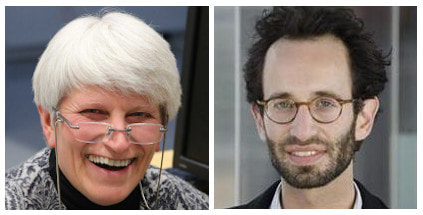 Profs Aina Puce (Left) and Daniel Margulies. Profs Aina Puce (Left) and Daniel Margulies.
In this podcast we discuss some of the history and evolution of OHBM. We also talk about some of the challenges that it has faced in recent years with world events causing a last minute change in venue three times. We talk about the improvements in this year’s virtual meeting as well as the growth in the engagement of younger members of OHBM with all the chapters and SIGs.
Guests:
Aina Puce, Ph.D. Aina has been active in OHBM since the beginnings. She is Chair of OHBM Council, otherwise known as President of OHBM and Director of the Indiana University Research Imaging Facility and the Eleanor Cox Riggs Professor of Psychological and Brain Sciences. After a Ph.D. from the University of Melbourne in 1990, she was a post-doc then an associate research scientist at Yale. She moved back to University of Swinburne in 1998, then back again to the states in 2002 to West Virginia University. Finally, she moved to Indiana University in 2008. She is an expert in visual neuroscience and EEG as well as fMRI. Daniel Margulies PhD. Daniel started in the US, receiving his BS in 2005 from NYU then in 2008, earned his MS at the European Graduate School in Saas Fee, Switzerland and Ph.D. at Humboldt University in Berlin. From 2009 to 2011 he was a post-doc in the Department of Neurology at the Max Planck Institute for Human Cognitive and Brain Sciences in Leipzig then a group leader of the Neuroanatomy and Connectivity group at Max Planck, Leipzig from 2011-2017. He received the 2018 OHBM Young Investigator (now called Early Career) award and received the Otto Hahn Award in 2010. He has been a pioneer in fMRI connectivity methods and has recently produced novel and penetrating work elucidating the organizational gradient that spans between sensorimotor and trans-modal areas. --- The Neurosalience production team consists of Anastasia Brovkin, Katie Moran, Nils Muhlert, Kevin Sitek, and Rachael Stickland.
By Peter Bandettini & the OHBM Neurosalience production team  Drs Jean Chen (left) and Molly Bright. Drs Jean Chen (left) and Molly Bright.
This week’s podcast is centered on physiologic fMRI. Generally, when people think of fMRI, they think of a way to map neuronal function, however there is so much information about neurovascular physiology in the signal. Many researchers who use fMRI may not realize all of the potentially untapped information—and confounds!—in the fMRI time series. Dr Jean Chen and Dr Molly Bright each run research groups that focus on this information in complementary ways. Both use physiologic manipulations and an array of acquisition methods to probe and characterize details of the hemodynamic response, though their two research programs focus on different aspects of the haemodynamic response function. In this podcast, they highlight the importance of physiologic fMRI for the field. They also consider the challenges facing women in male-dominated research fields and how the life of women scientists might be improved.
By Peter Bandettini & the OHBM Neurosalience production team  Dr Michael Fox Dr Michael Fox
In this week’s podcast, you’ll hear about clinical applications of resting-state fMRI from Dr Michael Fox. You’ll hear some of the highlights of his research, from the beginnings at Wash U, including his early work on resting-state fMRI and the issue of global signal regression, to his more recent pioneering work on lesion network mapping. Through this, you’ll find out about how lesions can impact behavior through their effects on functional networks. This approach is a promising inroad of fMRI towards clinical utility.
Guest:
Michael D. Fox, MD, PhD, is the founding Director of the Center for Brain Circuit Therapeutics at Brigham and Women’s Hospital and Associate Professor of Neurology at Harvard Medical School. He is also the inaugural Raymond D. Adams Distinguished Chair of Neurology and the Kaye Family Research Director of Brain Stimulation. He completed a degree in Electrical Engineering at Ohio State University, an MD and PhD at Washington University in St. Louis, and Neurology Residency and Movement Disorders Fellowship at Mass General Brigham. Clinically, he specializes in the use of invasive and noninvasive brain stimulation for the treatment of neurological and psychiatric symptoms. Dr. Fox’s research focuses on developing new and improved treatments for brain disease by understanding brain circuits and the effects of neuromodulation. --- The Neurosalience production team consists of Rachael Stickland, Kevin Sitek, Katie Moran and Anastasia Brovkin |
BLOG HOME
Archives
January 2024
|


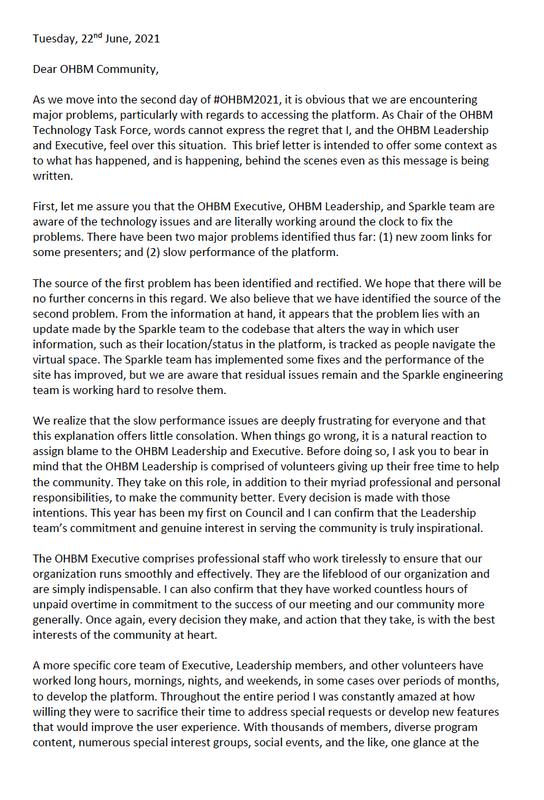
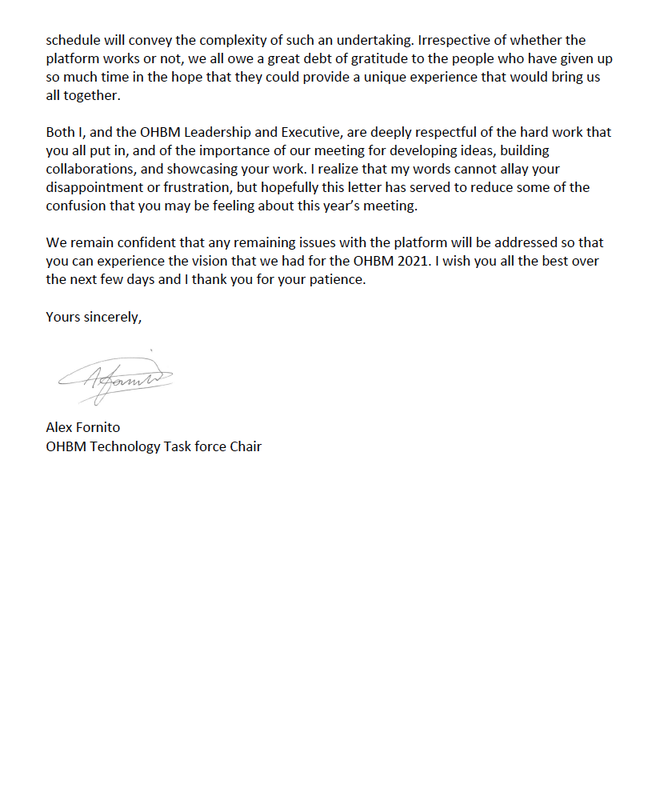

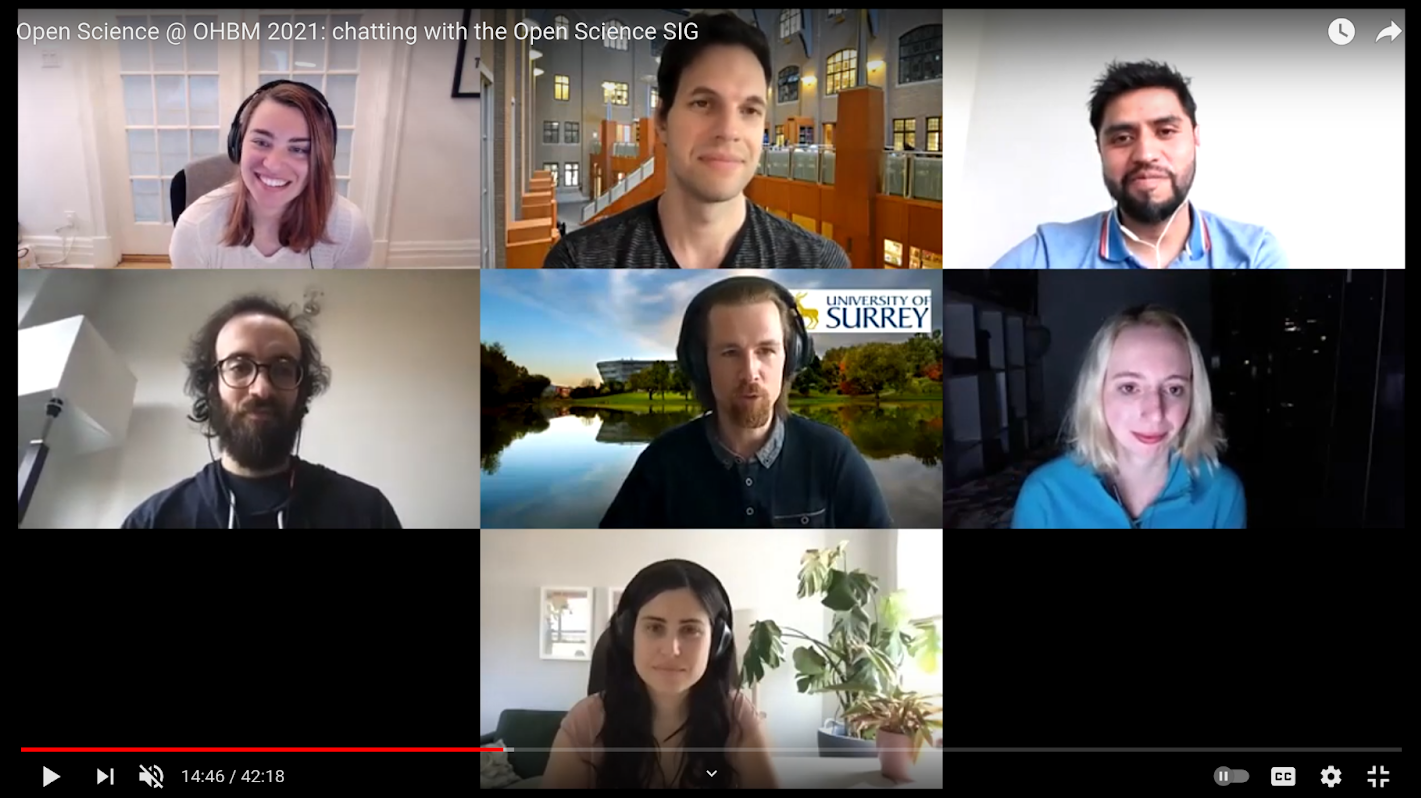
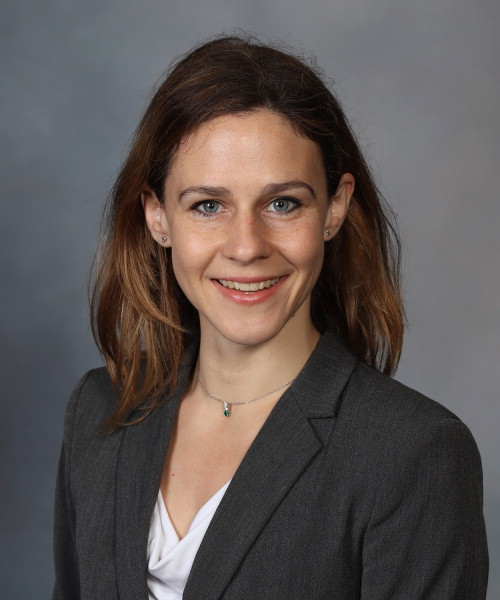
 RSS Feed
RSS Feed